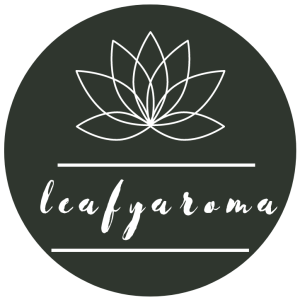If you’ve been considering going green with your beauty routine, the first question you need to ask yourself is what you are hoping to achieve? To make the switch to natural beauty, I believe you need to have a clear purpose to enable you to stick with it successfully.
Perhaps your motivation is to get rid of controversial ingredients such as parabens and eliminate potential allergens such as Methylchloroisothiazolinone and Methylisothiazolinone (commonly known as Kathon)? Or, maybe your focus is to become more environmentally friendly by banishing silicones and ethylene oxide derivates (which is basically everything starting with PEG, PPG or ending in –eth)? Is your intention to commit to products with vegan ingredients, or those which are transparent on sustainability by using recyclable packaging or traceable ingredients?
The reason I stress this step first is because it’s important to recognise which benefits you’re hoping to see or feel before you invest (financially and emotionally) in a completely new routine.
It’s becoming increasingly popular to divide the beauty category into good or bad, or toxic and non-toxic without any real scientific basis. Many ingredients have the potential to cause damage, but only at levels far higher than we’d ever experience in beauty products. EU regulations mean cosmetics can only contain ingredients and concentrations deemed safe. I would also caution that some ingredients which are not considered green or clean aren’t potentially dangerous or damaging to your skin either.
Perhaps surprisingly, I’m not totally against all commercial non-green beauty ranges even though I don’t use them myself. These companies invest millions into R&D to develop great products and many consumers find they deliver clear benefits for their skin. And, natural products aren’t always better for you as some ingredients can still trigger sensitivity.
Nevertheless, your skin is your largest organ and our first line of defense against all external pollutants, UV rays, irritants and infections. Estimates vary, but at least 60-70% of what you put on your skin can be absorbed into your bloodstream. So, it’s vital that we consider carefully what we use, particularly for those products that you apply and do not wash off such as moisturisers, serums and body creams. High quality green or clean ranges will help to give your skin the care it deserves and keep it healthier for longer.
Once you’ve made your decision to swap in green products, you will need to take ownership by gaining as much knowledge as possible to achieve your goal. So, the next step is to really understand your labels. I’m afraid to say that there are many brands out there who are guilty of “green-washing” in response to the rapid growth in consumer demand for green beauty products.
Surprisingly, familiar words such as ‘natural,’ ‘green,’ ‘sustainably-sourced’ and ‘eco’ which are regularly seen on packaging have no shared or enforceable definition. Unfortunately, these misleading and unsubstantiated claims can be sophisticated tactics to convince you into thinking the brand is more environmentally-friendly than it actually is purely in the pursuit of profit. Therefore, your perception and trust in these descriptors doesn’t necessarily match the ingredients contained in the products.
Understanding the ingredients listings on the back-of-packs is no small undertaking for even the most qualified amongst us. My go-to website for any ingredient-related search is https://www.cir-safety.org/ingredients. I recommend it as it’s the only scientifically validated website I can think of. Not only that, but it’s packed with invaluable reviews, safety assessments and experimental reports which even I sometimes refer to after 14 years of intense study!
Once you feel confident that you know what you’re looking for, the third and final step is to start testing new brands and products. As with any beauty products, not all green ingredients are equal in terms of quality and effectiveness. Sometimes the best products are found by trial and error. I’d suggest visiting a local store who will be able to advise which products will work best for your particular needs. This also offers a great opportunity to test them and try before you buy.
In the meantime, I’ve put together a list of the most common synthetic ingredients alongside their natural counterparts that you can substitute.
I hope this will make your journey into the world of green beauty a little easier!
| Synthetic | Function | Natural alternative |
| Aluminium salts | Anti-perspirant | Triethyl Citrate |
| BHT, BHA | Antioxidant | Tocopherol |
| Bismuth Oxychloride | Mineral make up | Zinc Oxide |
| Charcoal | Purifying | Black Clay |
| EDTA | Chelating | Phyti Acid |
| Hydroquinone | Brightening | Liquorice Root Extract |
| Petrolatum | Barrier enhancer | Squalane |
| Propylene glycol | Humectant | Glycerin (plant-based) |
| Retinol | Brightening/fine lines | Vitamin B3 (Niacinamide ) |
| Silicones | Light touch emollient | Meadowfoam Seed Oil |
| Sulphates | Surfactants | Decyl Glucoside |
| Talc | Absorbent | Rice Starch |
| TEA | Alkaline excipient | Sodium Hydroxide |
| Triclosan | Anti-microbial | Salvia Officinalis (Sage) Oil |
